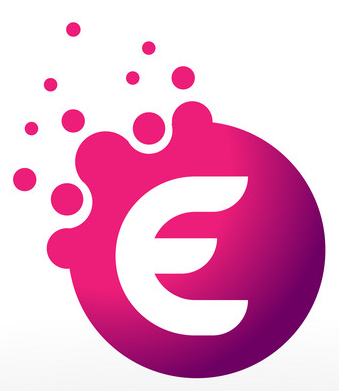Integration of verified whatapp in the DGT'S public relations business process: Communication channel innovation to improve public trust
DOI:
https://doi.org/10.54957/educoretax.v5i8.1657Kata Kunci:
Digital communication, Public trust, Standardization, Verified WhatsappAbstrak
This study aims to analyze the use of verified WhatsApp accounts by Indonesia's Directorate General of Taxes (DGT) as an official communication channel to build public trust. The research is motivated by the rise of digital fraud impersonating DGT—especially via WhatsApp—which has weakened public confidence in the tax authority. Using a descriptive qualitative approach, the study collected data through literature review, policy documentation, interviews with MSME actors and DGT officials, and observation of verified WhatsApp account usage. The findings indicate that verified WhatsApp accounts function as strategic credibility signals (signaling), enhance communication effectiveness (media richness), reinforce institutional legitimacy and trust (compliance), and facilitate trust transfer from institution to platform (trust transfer). The verified badge allows the public to distinguish official sources from fake ones, boosting both trust and voluntary tax compliance. The study recommends standardizing the use of verified WhatsApp accounts across all Tax Service Offices (KPP) as part of DGT's digital communications strategy.
Referensi
Agusetiawati, W. D., Askandar, N. S., & Nandiroh, U. (2024). Pengaruh Edukasi Pajak, Literasi Digital dan Sistem E-Filling Terhadap Kepatuhan Wajib Pajak Orang Pribadi. E-JRA, 13(1).
Alfian, F. K. (2024). Budaya Centang Biru Dalam Media Sosial Sebagai Penanda Pengakuan Sosial Dalam Sudut Pandang “Manipulasi Tanda.” Jurnal Lafinus, 1(1).
Creswell, J. W. (2014). Research Design: Qualitative, Quantitative, and Mixed Methods Approaches. SAGE Publications.
Daft, R. L., & Lengel, R. H. (1986). Organizational Information Requirements, Media Richness and Structural Design. Management Science, 32(5), 554–571. https://doi.org/10.1287/mnsc.32.5.554
Etzioni, A. (1975). A comparative analysis of complex organizations: On power, involvement, and their correlates. Free Press.
Hariani, A. (2023). Survei Indikator: Kepercayaan Publik ke DJP Naik 83,7 Persen. Https://Www.Pajak.Com/Pajak/Survei-Indikator-Kepercayaan-Publik-Ke-Djp-Naik-837-Persen/.
leap.digitalbisa.id. (2024). Akun WA Terverifikasi jadi Landasan Kepercayaan Pelanggan. Https://Leap.Digitalbisa.Id/Article/Akun-Wa-Terverifikasi-Jadi-Landasan-Kepercayaan-Pelanggan.
Liao, C. H., Hsieh, J.-K., & Kumar, S. (2024). Does the verified badge of social media matter? The perspective of trust transfer theory. Journal of Research in Interactive Marketing, 18(6), 1017–1033. https://doi.org/10.1108/JRIM-10-2023-0339
Lunenburg, F. C. (2012). Compliance Theory and Organizational Effectiveness. INTERNATIONAL JOURNAL OF SCHOLARLY ACADEMIC INTELLECTUAL DIVERSITY, 14(1).
Pratama, N. C. A., & Hartono, S. (2022). Tinjuan Prosedur Operasional Media Sosial Direktorat Jenderal Pajak Dalam Rangka Edukasi Perpajakan. JURNAL PAJAK INDONESIA (Indonesian Tax Review), 6(2S), 472–487. https://doi.org/10.31092/jpi.v6i2S.1856
Putriana, M., Sari, W. P., Sulistyarini, D., Selvyana, A., Sabila, A. P., Tsabitahadi, E., Ghania, F. A., & Sari, L. K. Y. (2024). ANALISIS PENGGUNAAN APLIKASI WHATSAPP DALAM MENINGKATKAN EFEKTIVITAS KOMUNIKASI INTERPERSONAL PADA HUBUNGAN ASMARA JARAK JAUH. DIALEKTIKA KOMUNIKA: Jurnal Kajian Komunikasi Dan Pembangunan Daerah, 12(1), 1–11. https://doi.org/10.33592/dk.v12i1.4802
Rainer, P. (2024). Inilah Media Sosial yang Paling Sering Dipakai di Indonesia. Https://Goodstats.Id/Article/Inilah-Media-Sosial-Paling-Sering-Dipakai-Di-Indonesia-Pdyt0.
Rumeon, M., Sudaryanti, D., & Hidayati, I. (2025). Pengaruh Transformasi Digital dan Literasi Digital Terhadap Kepatuhan Pajak Pada Usaha Mikro, Kecil, dan Menengah (UMKM) di Malang Raya. E-JRA, 14(1).
Spence, M. (1973). Job Market Signaling. The Quarterly Journal of Economics, 87(3), 355. https://doi.org/10.2307/1882010
statista.com. (2025). Jaringan sosial paling populer di seluruh dunia pada Februari 2025, berdasarkan jumlah pengguna aktif bulanan. Statista.Com.
Subhaktiyasa, P. G. (2024). Menentukan Populasi dan Sampel: Pendekatan Metodologi Penelitian Kuantitatif dan Kualitatif. Jurnal Ilmiah Profesi Pendidikan, 9(4), 2721–2731. https://doi.org/10.29303/jipp.v9i4.2657
Suharnoko, B., Castaneda, N., Jorge, L., Chairunissa, T. F., Farid, M. N., Poerwanto, J., & Wirapati, B. A. (2021). Applying Behavioral Insights to Promote SME Tax Compliance in Indonesia : Activity Report (English).
Vaidya, T., Votipka, D., Mazurek, M. L., & Sherr, M. (2019). Does Being Verified Make You More Credible? Proceedings of the 2019 CHI Conference on Human Factors in Computing Systems, 1–13. https://doi.org/10.1145/3290605.3300755
van Dijck, J., Poell, T., & de Waal, M. (2018). The Platform Society. Oxford University PressNew York. https://doi.org/10.1093/oso/9780190889760.001.0001
Unduhan
Diterbitkan
Cara Mengutip
Terbitan
Bagian
Lisensi
Hak Cipta (c) 2025 Raldin Alif Al Hazmi

Artikel ini berlisensi Creative Commons Attribution 4.0 International License.











